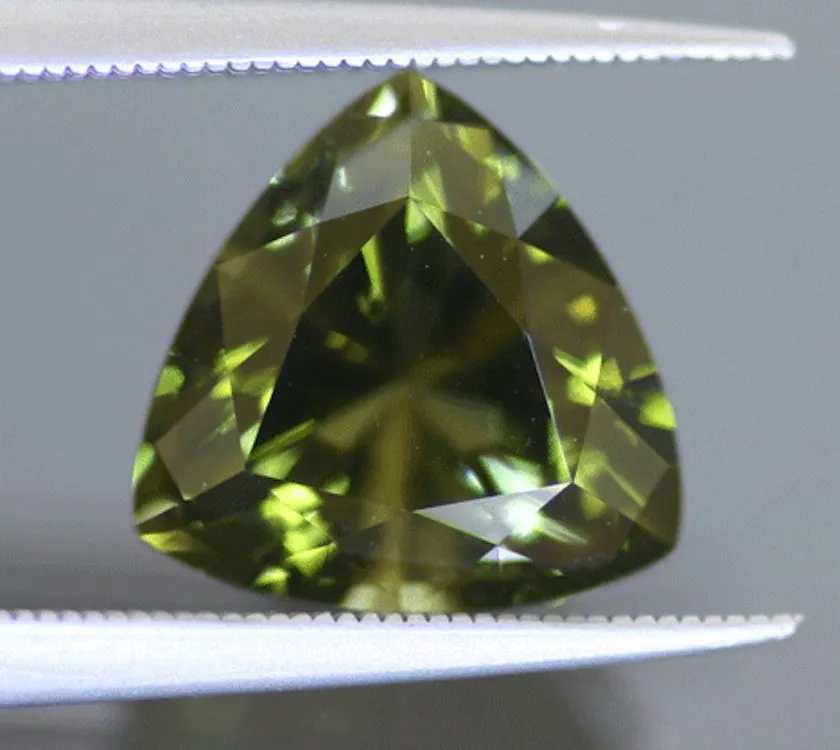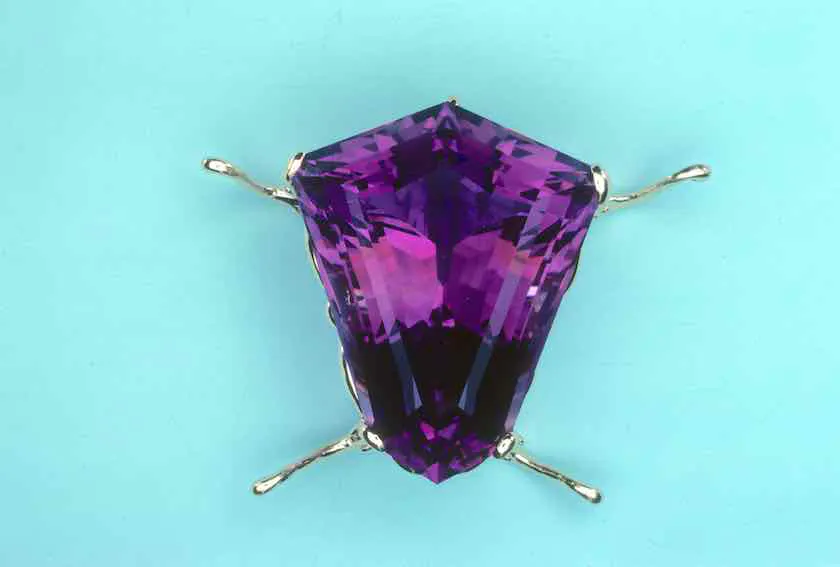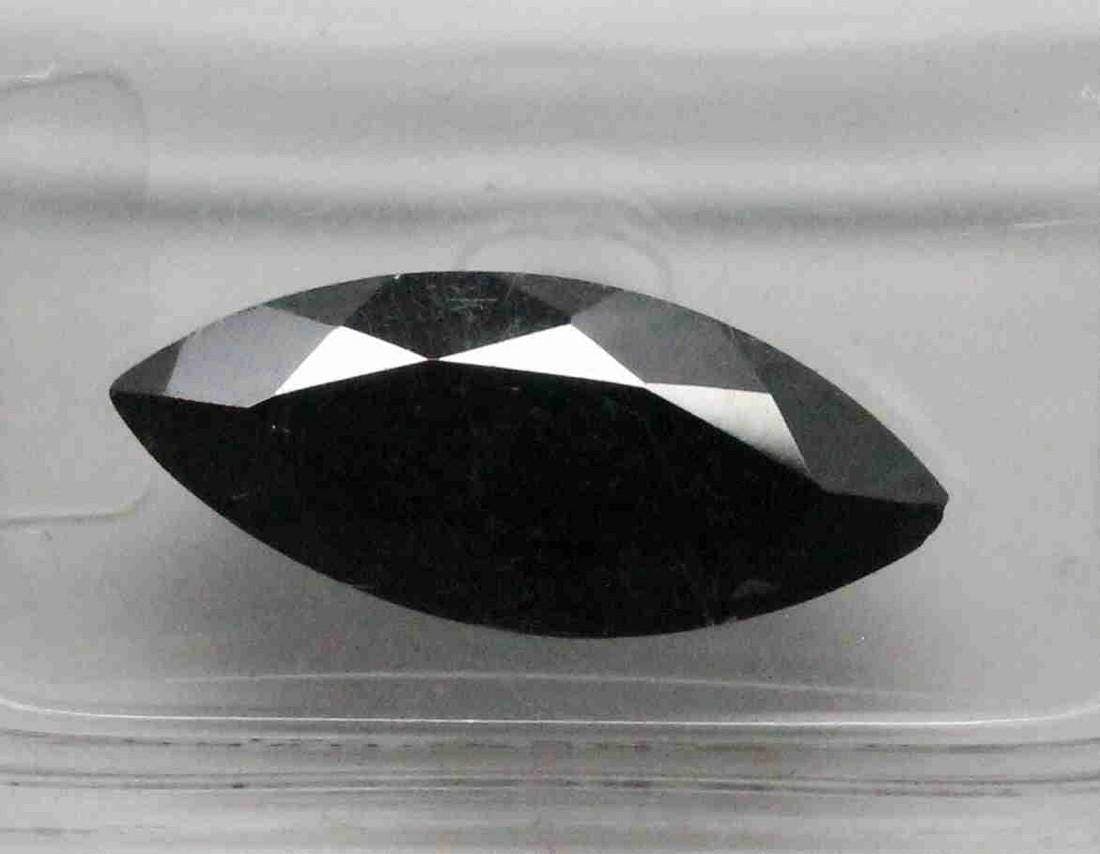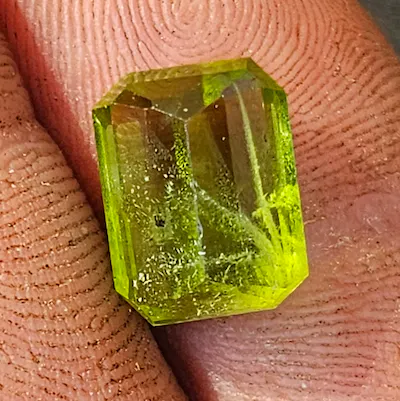Information about Gemstone Necklaces, News
How Much is a Pearl Necklace Worth?
For a deeper understanding of the value inherent in a pearl necklace, explore the introduction, which provides a concise historical overview of pearls and their profound significance. Unveil the origins and cultural import of pearls, and unearth the reasons behind their enduring and ageless charm. Delve into this captivating journey with the insights offered on our Melogems brand page, where the legacy and allure of pearls are intricately explored.
Brief history of pearls and their significance
Pearls have been beloved for centuries. People around the world have been fascinated with their beauty and mystique. Famous figures, such as Cleopatra and Audrey Hepburn, have donned them in their fashion.
Their history is rich, stretching back over 5000 years. The earliest evidence of pearl jewelry is from Mesopotamia and Egypt. People believed they were formed from the tears of mythical creatures like dragons and mermaids.
In the Roman Empire, pearls became a symbol of wealth and status. Emperors, noblewomen, and aristocrats wore them to flaunt their power.
In the 13th century, Marco Polo found an abundance of natural pearls in China. This sparked admiration for them in Europe. Later, humans learned how to cultivate pearls artificially. The credit for this goes to Kokichi Mikimoto, a Japanese entrepreneur. His breakthrough revolutionized the pearl industry.
Today, cultured pearls are the most popular type. They’re produced by nucleating oysters with irritants, like a shell bead or tissue implant. This encourages the oyster to form nacre around it.
Not all mollusks produce round pearls. Some species, like the freshwater pearl mussel, create irregular shapes. These unique baroque pearls have gained popularity in modern jewelry designs.
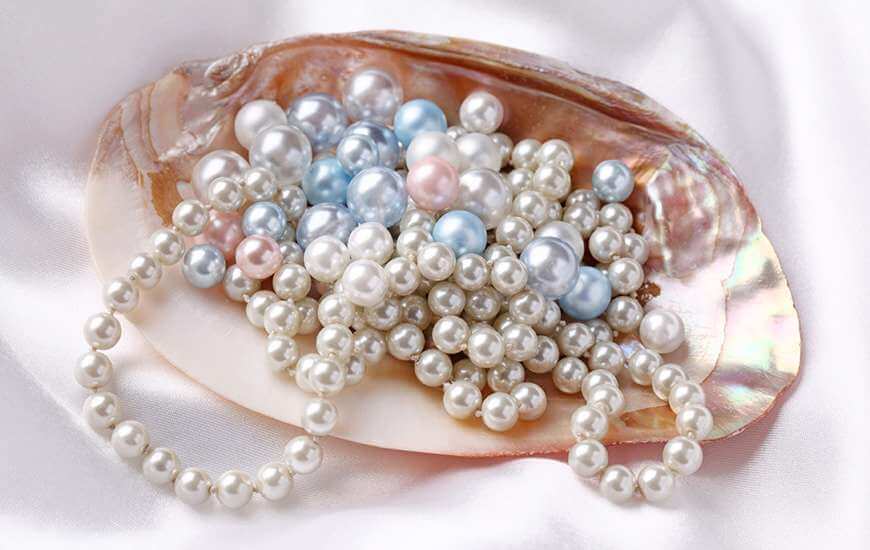
Factors that determine the value of a pearl necklace
To determine the value of a pearl necklace, consider the factors that come into play. Assess the quality of pearls based on their size, shape, color, and luster. Explore whether the pearls are natural or cultured, examining their origin. Lastly, take into account the rarity of the pearls. These sub-sections will break down the key elements in gauging a pearl necklace’s worth.
Quality of pearls (size, shape, color, luster)
When it comes to pearl necklaces, the quality of pearls is essential. Size, shape, color, and luster all contribute to the value.
Size: Larger pearls are more valuable due to their rarity. They stand out when worn.
Shape: Perfectly round pearls are highly prized. But, other shapes like teardrop or button can have unique appeal. The symmetry and uniformity of the shape affect the value.
Color: Pearls come in many colors – white, cream, pink, blue, green, and black. The more unusual the color, the higher the value.
Luster: Pearls with high luster have mesmerizing shine, which enhances beauty when worn as jewelry.
Table:
- Size: Larger pearls are rarer and therefore more valuable.
- Shape: Round pearls are highly sought after but other shapes can also be appealing.
- Color: Unusual or intense colors add uniqueness and value to a pearl necklace.
- Luster: High luster creates an alluring shine that enhances the beauty of pearls.
History:
Pearls were highly revered in ancient times, seen as symbols of wealth and status. Royalty and nobility wore them as adornments. People went on pearl fishing expeditions to find them. One famous example is the pearl harvesting in the Persian Gulf. These pearls were then used to create extravagant jewelry pieces, including necklaces.
Across cultures, pearl necklaces remain coveted pieces of jewelry due to their rarity, beauty, and historical significance.
Explore “How Much Does a Pearl Necklace Cost” at Melogems!

Origin of pearls (natural vs cultured)
Pearls, whether natural or cultured, have different values depending on their origin. Here are the main points to consider:
- Natural pearls are rare and highly sought-after. They form without any human help.
- Cultured pearls are made by inserting a nucleus into an oyster or mussel.
- The mollusk secretes nacre around the nucleus to form a pearl.
- Natural pearls take years to develop. Cultured ones can be grown faster.
- Due to their rarity, natural pearls are more valuable.
Back in the day, these gems were viewed as symbols of wealth and power. In 1893, Kokichi Mikimoto changed the game by introducing the process of culturing pearls. This made them more accessible to everyone.
The origin of pearls is a combination of natural beauty and human ingenuity. By understanding this, we can understand why they are so appealing to people all over the world.
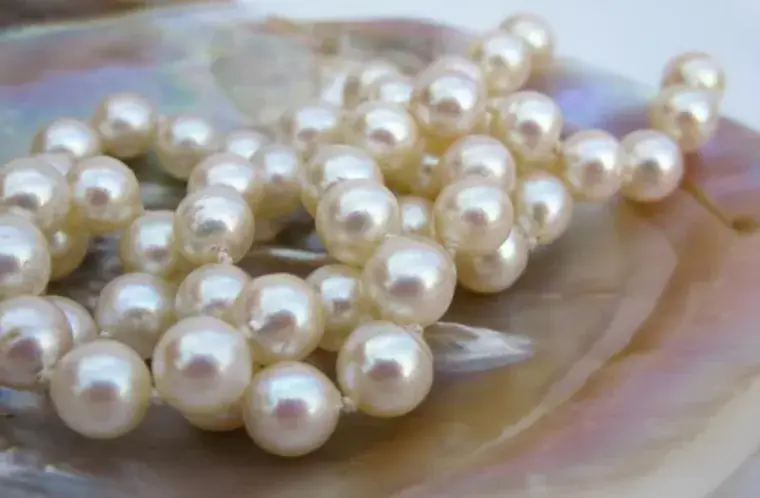
Rarity of pearls
Rarity in pearls sparks curiosity and fascination. They become sought after possessions due to their scarcity. To understand the worth of a pearl necklace, one must learn the factors that make them exclusive.
Take a look into the world of pearl rarity. Discover the details that make some pearls remarkable. Here are the things to note:
- Diameter – Rarely more than 18mm in size, 15mm is the peak of exclusivity.
- Luster – Their brilliance and shine is proof of their beauty. Pearls with a luminous glow captivate.
- Shape – While round is timeless, teardrop, oval and baroque have a unique charm.
- Color – From pastels to vibrant hues, different colors have varying rarity. This affects the value of a pearl necklace.
- Surface Quality – Smooth surfaces without blemishes are highly wanted. Flawless pearls are exceptional.
- Origin – Cultured pearls from various regions have different attributes. Pearls from places like Tahiti or Japan are prized.
The value of a pearl necklace depends on the presence or absence of these traits.
Pro Tip: For investment purposes, get help from professional jewelers or gemologists when assessing the rarity and worth of pearls.
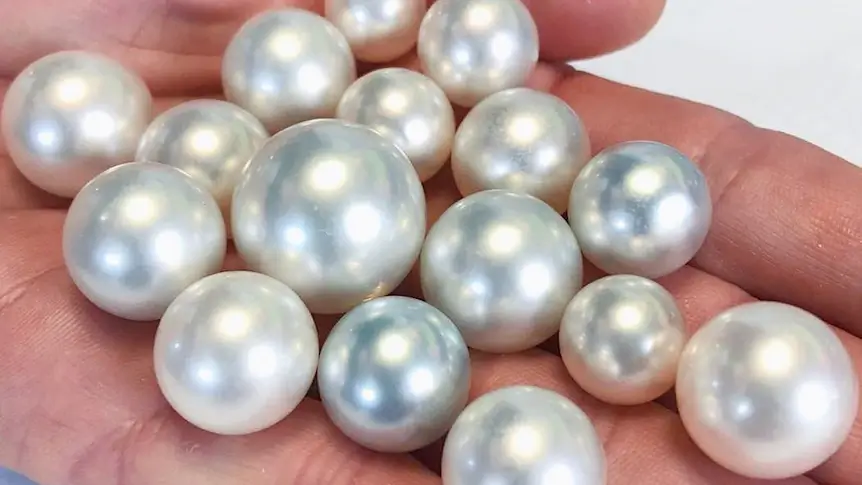
The grading system for pearls
To understand the grading system for pearls, delve into the AAAA grading system. Discover the intricacies that determine the value and quality of a pearl necklace. Explore how this grading system provides crucial information about the size, shape, color, and luster of pearls, helping buyers make informed decisions.
Explanation of the AAAA grading system
The AAAA grading system is a must-have for pearl professionals. It helps them grade pearls based on luster, shape, color, and surface quality. Buyers can trust this system to choose high-quality pearls. Here’s a breakdown:
- Luster: A pearl’s shine and reflection. High luster reflects light better than duller pearls.
- Shape: Pearls come in round, near-round, button, drop, baroque, and circled. Round pearls are the most valuable.
- Color: Pearls can be white, black, pink, or green. The system looks at color richness and intensity.
- Surface Quality: This refers to any blemishes or irregularities. Higher quality pearls have fewer imperfections.
It’s best to know the AAAA grading system before buying pearls. Don’t miss out on beautiful pearls that meet your standards.
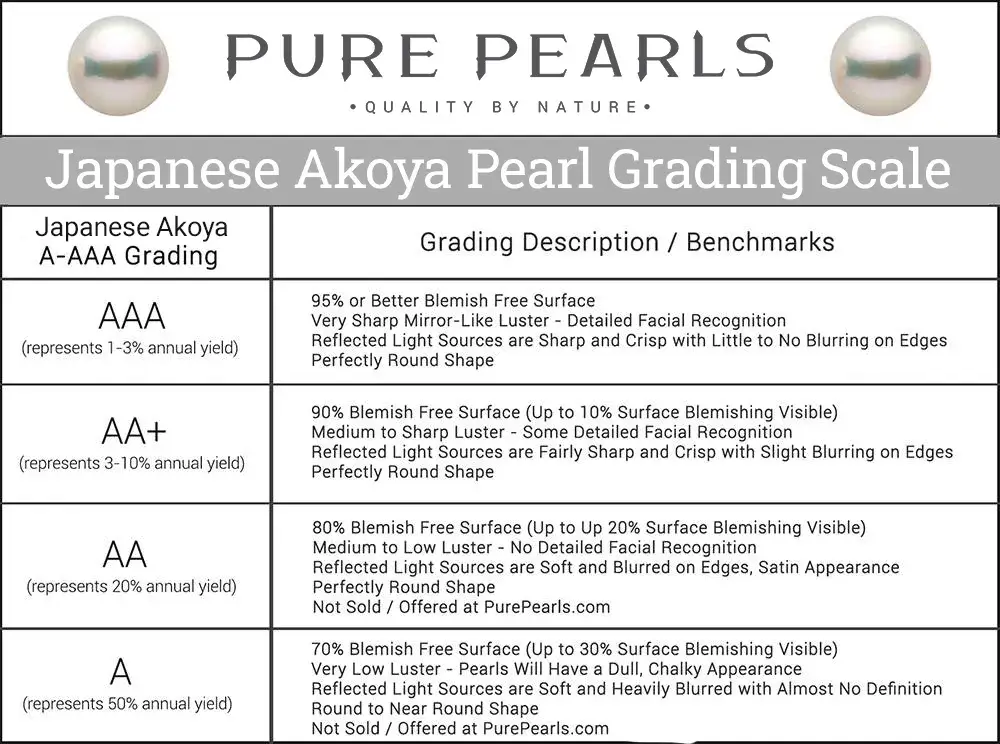
Market prices and trends for pearl necklaces
To understand the market prices and trends for pearl necklaces, delve into the price range for different types like freshwater, Akoya, and South Sea pearls. Discover the factors affecting price fluctuations in this section.
Price range for different types of pearl necklaces (freshwater, Akoya, South Sea)
Pearl necklaces come in a variety of prices, depending on what type of pearl is used. Freshwater pearls offer the most affordable option, ranging from $200 to $2000. Akoya pearls, known for their luster and round shape, range from $500 to $5000. For a truly luxurious choice, South Sea pearls are priced between $3000 and $30000.
Each type of pearl has unique features. Freshwater pearls can have pastel colors and irregular shapes for an organic look. Akoya pearls are sharp and round, exuding sophistication. South Sea pearls are large and naturally beautiful.
When choosing a pearl necklace, think about budget and personal style. Freshwater necklaces are great for a limited budget. But if there’s room to splurge, Akoya or South Sea pearl necklaces will be extra special.
Know the differences in price range and characteristics of each type of pearl to make an informed decision that suits your taste and individuality.
Interested in learning about what earrings to wear with a pearl necklace? Visit the news section of Melogems now!
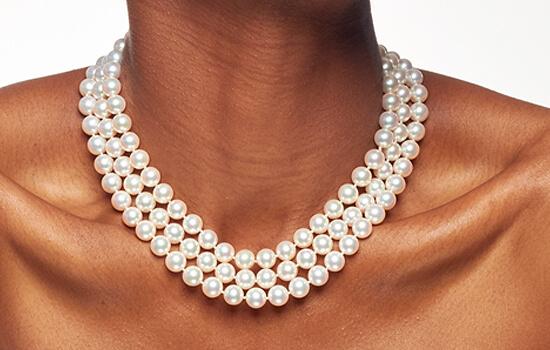
Factors that affect the price fluctuations of pearl necklaces
Pearl necklaces’ prices can vary a lot, impacting the market. Knowing these influencers is key for both buyers and sellers in this ever-evolving industry.
We present a brief yet full table showing some relevant factors for pearl necklace prices:
| Factor | Impact on Prices |
|---|---|
| 1. Pearl Size | Bigger – Higher |
| 2. Quality | Better – Higher |
| 3. Luster | Increased – Higher |
| 4. Shape | Symmetrical – Pricier |
| Asymmetrical – Cheaper |
Pearl size, quality, luster, and shape all affect pearl necklace prices. Yet, other particular points count too. For instance, the origin of pearls can also change their value. Blemishes or imperfections can also influence pricing.
Interesting fact: natural pearls are rarer and more costly than cultured pearls. Natural pearls are especially rare today, making them even more exclusive and costlier (source: The Gemological Institute of America).
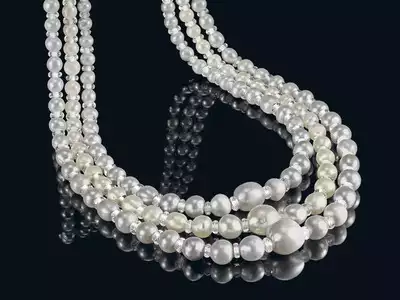
Techniques for assessing the value of a pearl necklace
To assess the value of a pearl necklace, turn to techniques like identifying fake pearls and evaluating the quality and condition. Discovering these insights will equip you with the knowledge needed to make an informed decision about the worth of your pearl necklace and ensure you get a fair deal.
Tips for identifying fake pearls
To tell the real from the fake pearls, you must pay close attention and be aware of their distinguishing features. Here are some tips to help you out:
- Look for shape and size consistency: Genuine pearls are usually not perfectly round, while fake ones usually are.
- Check the surface texture: Real pearls have a rough or gritty texture, while faux pearls tend to be smooth and glossy.
- Examine the luster: Real pearls have a soft glow, whereas artificial ones appear too shiny or are lacking in depth.
- Inspect the drill holes: Genuine pearls should have clean and sharp drill holes, while synthetic ones often have visible debris or rough edges around the hole.
- Perform the tooth test: Rub the pearl against your teeth. If it feels gritty, it’s likely real; if it feels smooth, it’s probably fake.
Plus, consider the weight of the pearl. Real pearls usually feel heavier than their fake counterparts. Also, the GIA states that 95% of cultured freshwater pearls on the market are actually imitations.

How to evaluate the quality and condition of a pearl necklace
Evaluating the quality and condition of a pearl necklace? Here’s a guide!
Examine the luster, surface flaws, color, shape, and stringing. Check the clasp functionality, too. Note: natural pearls are more valuable than cultured ones. Plus, size and design can affect value. Unsure? Get help from a jeweler!
Famous pearl necklaces and their worth
To understand the worth of famous pearl necklaces, delve into their historical significance and descriptions. Discover the cultural and aesthetic value behind iconic pearl necklaces. Additionally, explore the auction prices these renowned pieces have fetched, providing insights into their monetary value.
Description of iconic pearl necklaces and their historical significance
Pearl necklaces are icons of history, symbolizing elegance and luxury. One such remarkable piece is La Peregrina necklace with its pear-shaped pearl. Another is the Baroda Pearl Necklace, auctioned for $7.1 million in 2007. Its significance lies in its beauty and its association with history.
The Vanderbilt Triple Strand Necklace was owned by Gertrude Vanderbilt Whitney, an influential American philanthropist and art patron. It is a triple strand pearl necklace that embodies timeless elegance.
The Empress Eugenie Pearls are from the late 19th century, connected to one of history’s most prominent figures. They recently sold for $3 million at auction. Their value is in their ownership and connection to history.
Pro Tip: When assessing the value of a pearl necklace, size, symmetry, luster, and surface quality are key elements to consider. This can help admirers and collectors appreciate the worth of these pieces even more.
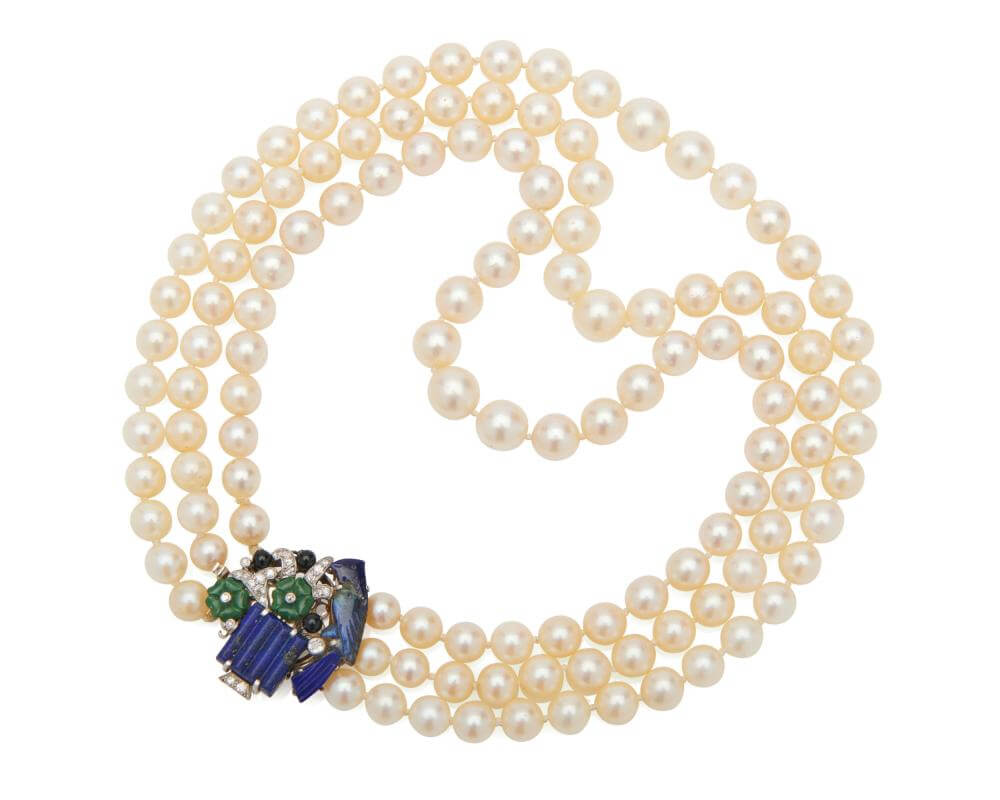
Auction prices of famous pearl necklaces
The gavel has been slammed, and auctioneers have seen incredible bids for stunning pearl necklaces! The table below shows some of the most remarkable auction prices for these exquisite pieces:
| Pearl Necklace | Auction Price (in USD) |
|---|---|
| La Peregrina | $11.8 million |
| Mary Tudor’s Rivière | $1 million |
| Baroda Pearl Necklace | $7.1 million |
| The Hope Pearl Necklace | $4 million |
These astounding figures show the great worth and charm that these unique pearls possess. Upon closer inspection, there are even more interesting facts about them. For example, La Peregrina necklace was owned by Queen Mary I of England and Elizabeth Taylor!
It is truly fascinating to observe how these iconic pearls keep attracting collectors and aficionados, leading to intense bidding wars at auctions around the world. (Source: Sotheby’s)
Conclusion
To conclude, gain clarity on the worth of a pearl necklace by reviewing the summary of key points discussed and considering final thoughts on its value. The summary will highlight key ideas covered while the final thoughts will provide a conclusive stance on the worth of a pearl necklace.
Summary of key points discussed in the article
The article focuses on improving communication in the workplace and highlights the importance of active listening and non-verbal communication for building strong team relationships. It identifies barriers to communication and provides tips on overcoming them. The article also emphasizes the role of technology in facilitating communication and collaboration, as well as the significance of cultural sensitivity in effective communication across diverse backgrounds. Strengthening communication is shown to enhance productivity and create a positive work atmosphere. Additionally, studies indicate that individuals with good communication skills are more likely to become leaders.
Final thoughts on the worth of a pearl necklace
It is essential to recognize the timeless elegance and sophistication of a pearl necklace. It has an amazing power to make any look or occasion more special with its glimmering beauty and grace. Its worth stretches beyond cash, as it has sentimental and cultural value in many societies and periods.
Let’s delve deeper into the captivating world of pearls. They form inside oysters through a process called nacre secretion which is a combination of calcium carbonate crystals. This results in a stunning masterpiece that beautifies any neckline.
Pearls have held a fascination for centuries, from ancient Egypt to Renaissance Europe and contemporary cultures. They possess a purity, wisdom and grace that are treasured by those who know life’s complexities.
As we wrap up our thoughts on the worth of a pearl necklace, something amazing to note is that the largest pearl is The Pearl of Lao Tzu, weighing 14 pounds. It is located in Palawan, Philippines and is proof of the incredible nature of pearls and their eternal magnetic draw.
To sum up, it is clear that pearl necklaces bring a special, timeless magnetism to any ensemble or event. Whether admired for its beauty or cherished for its significance, this accessory will always bewitch hearts and minds with its captivating appeal. So next time you see a dazzling strand of pearls around someone’s neck, take a moment to recognize their priceless value.

Frequently Asked Questions
FAQ: How Much is a Pearl Necklace Worth?
Q1: What factors determine the value of a pearl necklace?
A1: The value of a pearl necklace is determined by several factors including the size, shape, color, luster, surface quality, and origin of the pearls, as well as the quality and type of the necklace’s setting.
Q2: Are natural pearls more valuable than cultured pearls?
A2: Generally, natural pearls are more valuable than cultured pearls due to their rarity. However, the value of a pearl necklace also depends on other factors such as pearl quality and design.
Q3: Are freshwater pearls less expensive than saltwater pearls?
A3: Yes, freshwater pearls are usually less expensive than saltwater pearls. This is because freshwater pearls are more abundant and easier to produce than saltwater pearls.
Q4: Does the length of the pearl necklace affect its value?
A4: Yes, the length of a pearl necklace can affect its value. Longer necklaces generally have more pearls, making them more valuable. However, the overall value also depends on the quality and characteristics of the individual pearls.
Q5: What is the average price range for a pearl necklace?
A5: The price of a pearl necklace can vary widely depending on the factors mentioned earlier. On average, a good quality pearl necklace can range from a few hundred dollars to several thousand dollars.
Q6: Can I determine the value of a pearl necklace without professional appraisal?
A6: While it’s difficult to accurately determine the value of a pearl necklace without professional appraisal, you can get a general idea by educating yourself about pearls, comparing prices from reputable sellers, and examining the quality of the pearls and the necklace’s craftsmanship.

